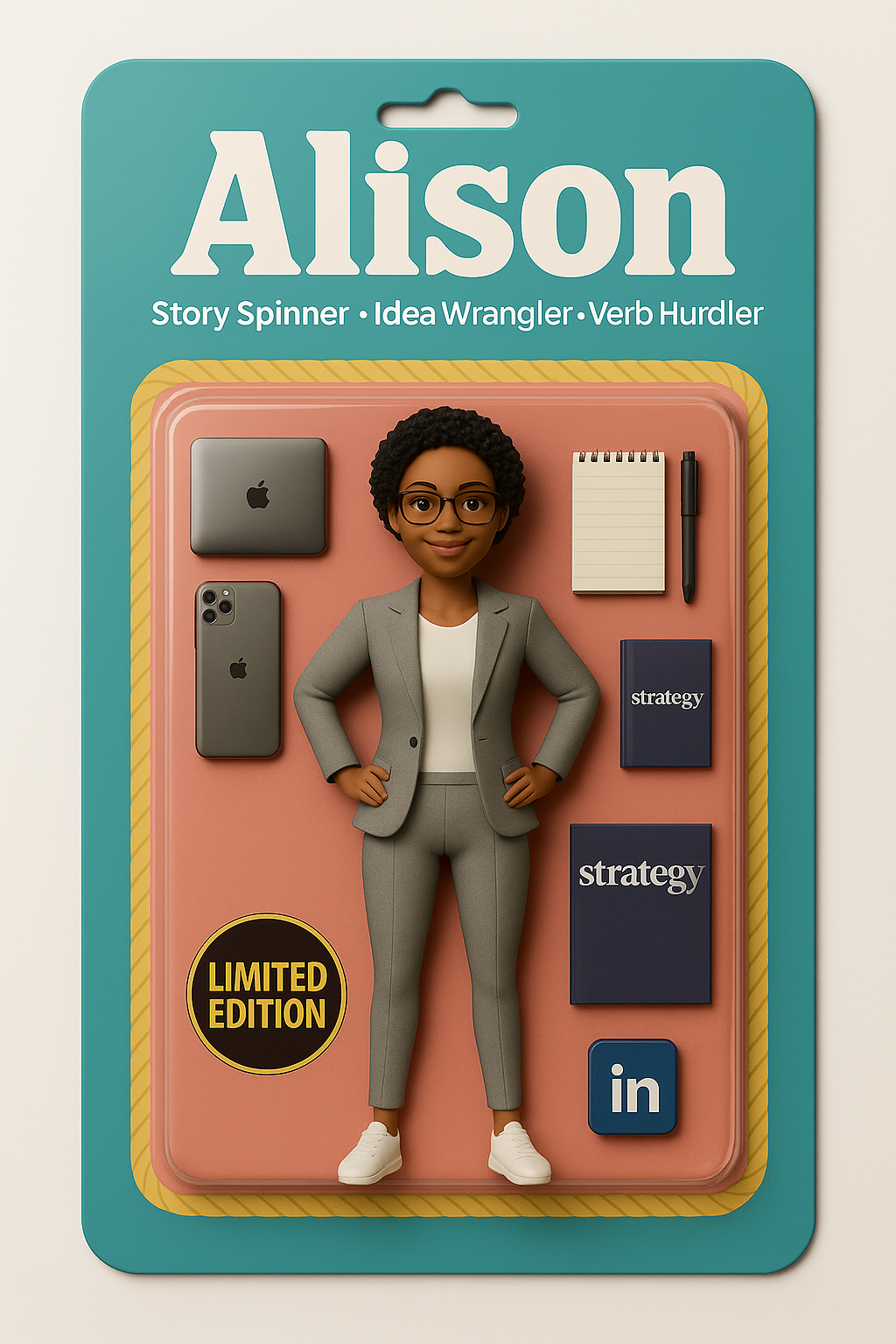Every marketer knows the classic sales adage: “Sell the sizzle, not the steak.”
But with Generative AI, we’re positioning it as the entire meal rather than what it truly is: the tantalizing sizzle that should draw customers to your table.
The result?
Your brand becomes another forgettable voice in the AI echo chamber that your audience has learned to tune out.
But with Generative AI, we’re positioning it as the entire meal rather than what it truly is: the tantalizing sizzle that should draw customers to your table.
The result?
Your brand becomes another forgettable voice in the AI echo chamber that your audience has learned to tune out.
When algorithms control creativity, it's like a Michelin restaurant serving microwave meals—technically perfect, but soulless outputs that customers can taste the difference in.
And worse? It's erasing what makes your brand you.
And worse? It's erasing what makes your brand you.
The action figure fiasco
Last week, I got curious about this whole AI portrait trend flooding my feed. You know the ones—people posting those suspiciously flattering AI action figure renderings with captions like “I just typed ‘make me’ and got this perfect likeness!”
So, I decided to run my own little experiment. I asked ChatGPT to design a “limited edition action figure” of me—a Black female copywriter, editor, and brand specialist.
What could possibly go wrong? Everything, as it turns out.
Version 1
So, I decided to run my own little experiment. I asked ChatGPT to design a “limited edition action figure” of me—a Black female copywriter, editor, and brand specialist.
What could possibly go wrong? Everything, as it turns out.
Version 1
Imagine AI designing a Black woman after browsing three stock photos and skimming Essence. The hair? A stiff, uniform helmet that defies gravity. The features? Straight from the “ethnically ambiguous” dropdown menu. Bizarrely, my digital twin has two coffee cups and two notepads with pens—because apparently one set wasn't “empowered professional” enough.

Version 2
In version two, I got specific about my features. But the algorithm ignored them. It threw up an almost identical version with a slightly improved afro (progress?), zero coffees, one notepad and—surprise—two strategy books. This despite explicitly requesting a single book. One step forward, two strategic steps back.

Version 3
For round three, I submitted an even more detailed prompt. The outcome? Not me, but some strange fusion of Tamron Hall's smile and Issa Rae's eyes—as if the AI thought, “Can't figure her out. Let's blend famous Black women instead.” The coffee cup returned, alongside marketing books including one with a gibberish title. Third time's the charm?

The human gap
The flaws were not subtle. Hallucinated text made zero sense. Branding completely disconnected from my actual work. Not to mention, the absolute erasure of my personal identity.
ChatGPT's “vision” of me was a committee-designed robot's guess—as if it had been trained on corporate diversity brochures.
And this is the problem. AI needs humans to fix its mess. Without us, it's just spitting back remixed versions of whatever it's been fed—and those inputs are often flawed, biased, and completely devoid of cultural context.
ChatGPT's “vision” of me was a committee-designed robot's guess—as if it had been trained on corporate diversity brochures.
And this is the problem. AI needs humans to fix its mess. Without us, it's just spitting back remixed versions of whatever it's been fed—and those inputs are often flawed, biased, and completely devoid of cultural context.
Bottom line? AI can’t replace humans. The final human edit is non-negotiable.
The prompt paradox
Believing better AI prompts will solve everything is also a trap.
I asked for “a visionary Black creative with a journalistic background” and it gave me a cyborg Oprah.
The more specific my prompts got, the more the AI hallucinated details. One version gave me three arms. Another had my nose drinking the coffee.
Each iteration revealed AI's fundamental limitation: it can pattern-match, but it cannot truly see you.
I asked for “a visionary Black creative with a journalistic background” and it gave me a cyborg Oprah.
The more specific my prompts got, the more the AI hallucinated details. One version gave me three arms. Another had my nose drinking the coffee.
Each iteration revealed AI's fundamental limitation: it can pattern-match, but it cannot truly see you.
Smart AI use vs. abuse
The problem isn't using AI—it's letting AI use you. Here's how to maintain control:
Do:
Don’t:
AI is a sous-chef, not the headliner. It can chop vegetables and maintain temperature, but it shouldn't design the menu or plate the final dish.
The best uses of generative AI happen when it amplifies your creativity—not when it replaces it. Keep AI in its proper place: as the sizzle that draws attention, not the steak that delivers substance.
Do:
- Use AI when you're stuck for ideas
- Let it handle formatting and basic structures
- Use it for that word you just can't remember
- Use it as a weapon to fast-track your content marketing process
Don’t:
- Let it replace your creativity
- Let it make up stats or quotes (fact-check everything)
- Allow it to define your brand voice
- Accept its first draft as good enough
AI is a sous-chef, not the headliner. It can chop vegetables and maintain temperature, but it shouldn't design the menu or plate the final dish.
The best uses of generative AI happen when it amplifies your creativity—not when it replaces it. Keep AI in its proper place: as the sizzle that draws attention, not the steak that delivers substance.
Toronto-based copywriter and brand strategist, Alison Copeland is the founder of Copeland Creative, helping brands sell their stories with strategy, ideas, and action.
